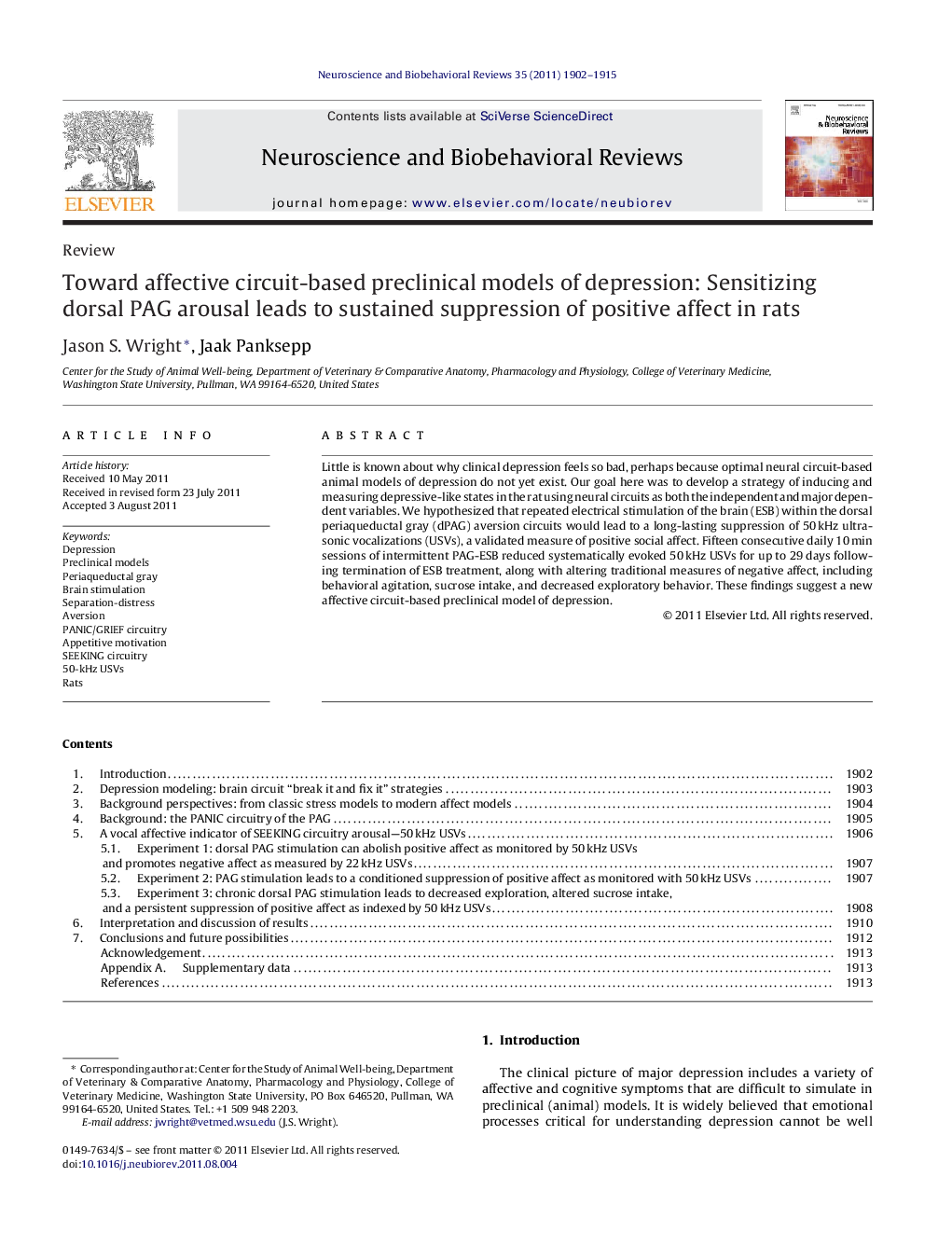| Article ID | Journal | Published Year | Pages | File Type |
|---|---|---|---|---|
| 937597 | Neuroscience & Biobehavioral Reviews | 2011 | 14 Pages |
Little is known about why clinical depression feels so bad, perhaps because optimal neural circuit-based animal models of depression do not yet exist. Our goal here was to develop a strategy of inducing and measuring depressive-like states in the rat using neural circuits as both the independent and major dependent variables. We hypothesized that repeated electrical stimulation of the brain (ESB) within the dorsal periaqueductal gray (dPAG) aversion circuits would lead to a long-lasting suppression of 50 kHz ultrasonic vocalizations (USVs), a validated measure of positive social affect. Fifteen consecutive daily 10 min sessions of intermittent PAG-ESB reduced systematically evoked 50 kHz USVs for up to 29 days following termination of ESB treatment, along with altering traditional measures of negative affect, including behavioral agitation, sucrose intake, and decreased exploratory behavior. These findings suggest a new affective circuit-based preclinical model of depression.
► New approach to modeling depression in pre-clinical animal model. ► Independent and major dependent variable represent distinct neural circuits. ► Chronic PAG stimulation leads to long-term suppression of positive affect in rats.
